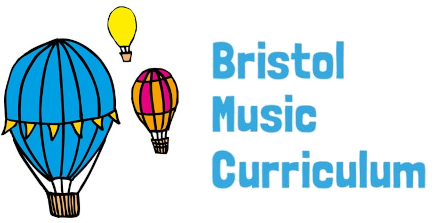Key Learning Objectives: To make predictions about how a song will sound based on the lyrics. To add in percussion or sound effects appropriate to the mood of a song. To sing and perform a song with accurate intonation. Starter activity: Using the provided summary video, introduce Shakespeare’s most notorious play ‘Macbeth’. Discuss why pupils think […]
Category: Year 6
Year 6, Unit 3: Chronology – Lesson 5
Key Learning Objectives: To identify a number of features of 20th century/modern music. To compare features of music from two different historical periods. Starter activity: Introduce the pupils to modern/20th century music, using the provided Classic FM video. Discuss how this genre is seen to be a ‘break from the past’, highlighting key features and styles […]
Year 6, Unit 3: Chronology – Lesson 4
Key Learning Objectives: To listen to incidental music written for Shakespeare’s play ‘The Tempest’ and identify Nationalistic features. To identify how a composer uses instruments to create an effect or paint a picture in the music. Starter activity: Listening and response exercise based on the provided video. Play the sound only from the video, encouraging the pupils […]
Year 6, Unit 3: Chronology – Lesson 3
Key Learning Objectives: To identify the key features of the Romantic music. To compare music from the same era and identify similarities. To explain how music can create a mood in terms of instruments, dynamics and texture. Starter activity: Introduce the music of the Romantic Period to the pupils by playing ‘Dance of the Knights’ by […]
Year 6, Unit 3: Chronology – Lesson 2
Key Learning Objectives: To recognise Baroque instruments. To identify Baroque decoration (ornamentation) in a given musical example. Starter activity: Listening and response exercise based on the work ‘The Fairy Queen’ by Purcell. Focus on identifying the instrumentation, in particular the harpsichord. Main activity: Listen to the provided clip, a good example of a Baroque da capo […]
Year 6, Unit 3: Chronology – Lesson 1
Key Learning Objectives: To identify some instruments from the Renaissance period. To learn to sing a song from the Renaissance period. To identify some features of a Madrigal. Starter activity: Listening and response exercise based on the work ‘Sing we and Chant it’ by the English composer Thomas Morley, as an introduction to the Renaissance […]
Year 6, Unit 2: Samba – Lesson 6
Key Learning Objectives: To maintain a musical line within a Samba structure, recognising and responding appropriately to calls. To refine and improve a performance. Starter activity: Class exercise using a metronome set to 120 bmp. Divide the class into two groups, one group to clap on beat one of three and the other to clap […]
Year 6, Unit 2: Samba – Lesson 5
Key Learning Objectives: To maintain a rhythmic line within a Samba structure. To respond correctly to a given call. Starter activity: Class exercise using a metronome set to 120 bmp. Divide the class into two groups, one group to clap on beat one of five and the other to clap on beat one of seven. […]
Year 6, Unit 2: Samba – Lesson 4
Key Learning Objective: To recognise and perform complex rhythms and maintain a rhythmic part in canon / in a round (where one parts begins before another). Starter activity: Call and response practice, based on a teacher-led activity. The teacher to whisper the call and the pupils to echo the response rhythms. Extend the activity by dividing […]
Year 6, Unit 2: Samba – Lesson 3
Key Learning Objectives: Children are able to read and perform four basic samba rhythms in ensemble. Children are able to maintain a line in a round / canon. Children can recognise and identify samba instruments. Starter activity: Introduce Samba Batacuda as a solely percussion form of Samba. Use the provided powerpoint to view the instruments […]
